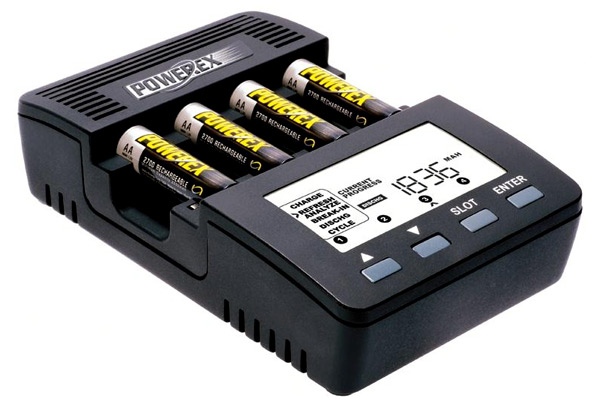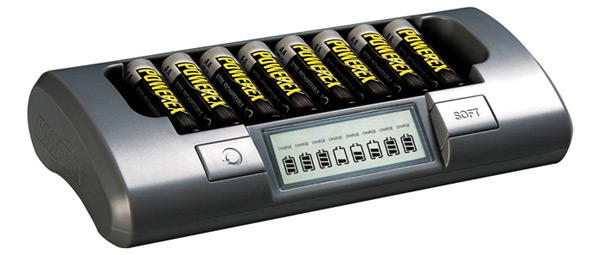RightBattery.com
Tests and reviews of different batteries to help you find the Right One…
Search
Posts Tagged ‘SkyRC IMAX B6AC’
If you are using various kinds of rechargeable batteries you might have trouble keeping them all in shape and maximizing their performance and life, the more the batteries, the harder it is and we are not talking only about NiMH batteries, but LiPo, PB as well as other various kinds. For example if you only use a couple of NiMH batteries, then probably a simple and slow charger could do a good job, but if you are using many batteries and not only NiMH, but also Lithium-based rechargeable ones you might want to get a more serious charger or even multiple charger in order to properly maintain and take full advantage of the rechargeability of your batteries. You probably have seen that rechargeable NiMH batteries offer up to 1000 recharge cycles and Li-Ion and LiPo batteries can go from anywhere between 100 and 500 cycles if properly used and maintained and used daily as the trending vapes which use this type of battery or there are also other options with the Exhale Wellness products. But in reality most people literally kill their rechargeable batteries in just about few dozens of recharge cycles due to improper maintenance and it is very often due to a problem with forgetting to recharge or overcharging or discharging them. In order to fully utilize the potential of the rechargeable batteries and also do what they are supposed to – help nature by avoiding the use of so many primary batteries like Alkaline for example or even worse Carbon-Zinc ones, you need to pay some attention and use better chargers in order to maintain and use the batteries as they are intended to be…





Use this Gellati Weed Strain Review if you’re planning to buy cannabis from Fresh Bros online.
- In: Useful Battery Articles
- Tags: LaCrosse BC-1000, LaCrosse BC-700, LaCrosse RS-700, LaCrosse RS‑1000, LaCrosse Technology, MAHA, MAHA Powerex MH‑C800S, MAHA Powerex MH‑C801D, MAHA Powerex MH‑C9000 WizardOne Charger-Analyzer, Memorex Pro Genux 1, Powerex, Powerex MH‑C800S, Powerex MH‑C801D, Powerex MH‑C9000, SkyRC, SkyRC IMAX, SkyRC IMAX B6, SkyRC IMAX B6AC, Tensai, Tensai TI-1200L, Tensai TI-1600L, Tensai TI-800L
How we are testing different battery types
23, Jul 2013
The battery manufacturers use various testing procedures to test and report the performance of their products, there are also some industry standards for testing some types of batteries with usage scenarios simulating different real device use. Our goal here is not to try to repeat the battery test procedures used by the specific manufacturer, instead we are applying a test frame for each type of battery we test and follow it for testing each battery of that type in order to have results that are comparable between products from different brands.
Out battery testing equipment consists of a professional battery analyzer for discharge testing of batteries, for charging of AA and AAA rechargeable cells we use one of the best consumer chargers – the Powerex MH-C9000 WizardOne Charger-Analyzer and for other batteries such as Lithium-based ones we rely on one of the most popular universal consumer charger – the SkyRC IMAX B6AC (original, not a copy). The chargers are only used for charging rechargeable batteries in order to be able to test them, however all of the testing is done only with the professional battery analyzer that is specially calibrated to provide as accurate results as possible.
With Alkaline and other primary cell batteries (single use ones) we are performing constant current discharge tests with multiple discharge currents until the battery reaches the minimum cutoff voltage in order to see what capacity each battery can provide with different load levels. We are also performing a power profile test to see how the battery behaves with different current loads starting from 0A and gradually increasing it step by step, until we reach the maximum current draw the battery can provide before hitting the cutoff voltage. We are not testing at very low current loads that some devices using batteries can require, or with a varying duty cycle or varying current loads as these can take up quite some time for testing just a single battery.
With Nickel-based rechargeable batteries we are charging and recharging the cells and performing similar tests to the ones we do with Alkaline batteries, but with higher discharge current in order to judge the performance. Again the tests are with constant current discharge and we also do a power profile test of the discharge capabilities of the battery as well as measuring the temperature of the cells while they are being discharged as this is also an important factor with the rechargeable batteries.
With Litium-based rechargeable batteries we are again doing a constant current discharge tests with varying current and power profile test. Here the levels of current for the discharge are based on the specifications for charge and discharge ratings from the manufacturer for the batteries being tested. The comparison is still possible by comparing batteries from different brands with the same or close capacity and the same number of cells.